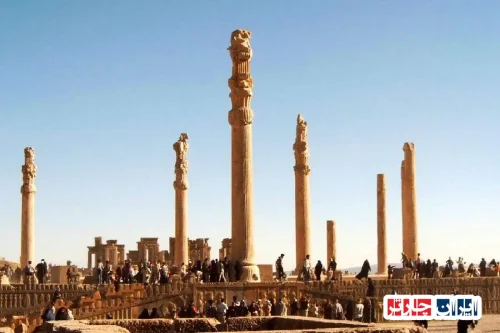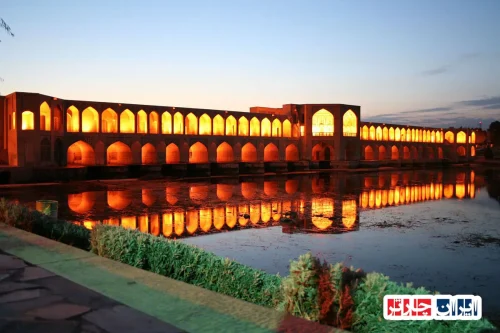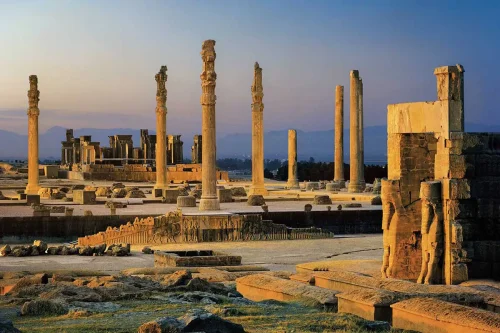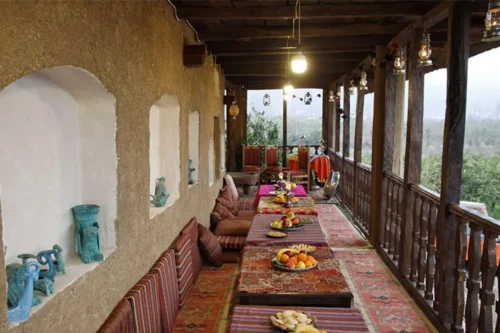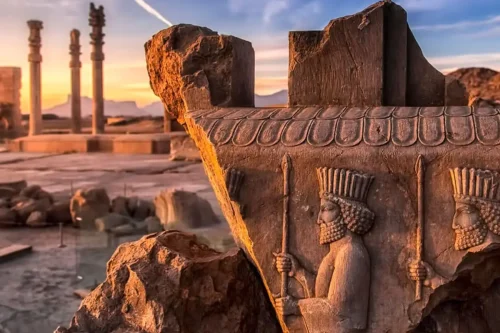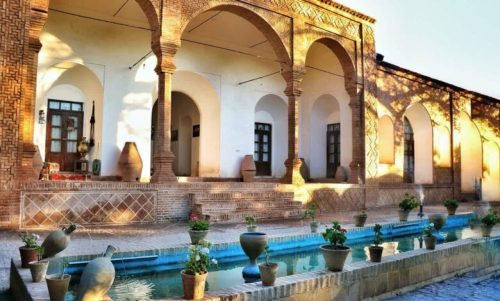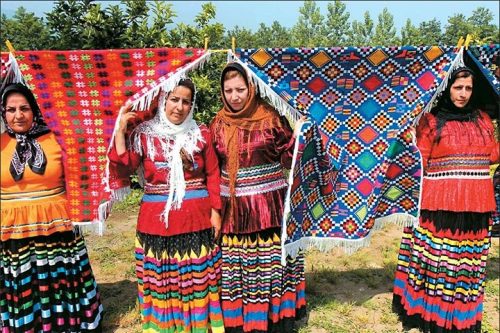Disputes Over the Transfer of the Historic “House of Qazvinis” in Isfahan
The ongoing debate over the transfer of the historic “House of Qazvinis” in Isfahan represents one of the most sensitive and challenging issues in the field of cultural heritage preservation in this province. Located in the Shahshahan neighborhood of Isfahan, this historic house not only contributes to the city’s architectural history but also symbolizes the continuous efforts of cultural heritage activists to protect and revive ancient monuments. The decision to transfer the “House of Qazvinis” to Isfahan Art University has sparked opposing views among experts and enthusiasts of cultural heritage preservation. Many believe that the house should be restored to its primary status as the foremost stronghold of Isfahan’s cultural heritage, with precise restorations and scientific revivals to maintain its historical value.
Cultural heritage activists in Isfahan have called for the revocation of the transfer resolution, citing the significance of this monument. They argue that transferring the Qazvinis’ house to the Art University may lead to its neglect and potential destruction of its historical infrastructure. These concerns have gained attention among cultural heritage experts and the general public, highlighting the need to reassess decisions regarding the transfer of prominent historical artifacts.
On this topic, Iran Charter insists on the importance of adhering to cultural heritage preservation principles to prevent the destruction and neglect of these ancient artifacts. It is hoped that with the cooperation of relevant organizations and attention to the principles of cultural heritage preservation, the historic “House of Qazvinis” will be preserved and revived in the best possible way and maintain its place as one of Isfahan’s most valuable historical monuments.
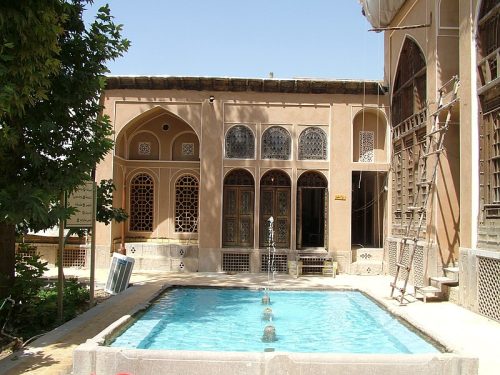
History of the Qazvinis’ Historic House in Isfahan
The Qazvinis’ historic house is one of the prominent symbols of traditional architecture in the Shahshahan neighborhood of Isfahan. Reflecting the art and culture of the Qajar era, this building plays an important role in preserving Isfahan’s historical identity. Over the years, it has become known not only as a residence, but also as a cultural and educational center. Its unique architecture and historical values make its transfer to various institutions a sensitive and challenging topic.
Transfer Resolution of Qazvinis’ Historic House to Isfahan Art University
Recently, a resolution was passed to transfer Qazvinis’ historic house to Isfahan Art University, triggering conflicts between cultural heritage activists and university officials. The main objective is to utilize the historical assets for scientific and educational purposes. While the university intends to use it as a craft center, cultural heritage groups strongly oppose this decision.
Opposition of Cultural Heritage Activists to the House Transfer
Cultural heritage activists in Isfahan criticize the resolution, fearing damage to the house’s historical structure if repurposed for educational objectives. They argue it should remain a cultural relic and not be altered for modern uses. These activists demand the decision nullified, returning the house for restoration and complete revitalization.
Architectural Significance and Historical Value of Qazvinis’ House
The Qazvinis’ historic house exemplifies Qajar architectural style in Isfahan with expansive yards, a pool house, a mirror hall, and exquisite decorations. Its historical value is significant for the city’s history and ongoing efforts to preserve ancient monuments in Isfahan.
Potential Impacts of Transferring the House to the University
Transferring the Qazvinis’ historic house to Isfahan Art University may present diverse outcomes. While it could provide scientific and educational benefits, concerns about structural damage and diminished cultural value persist. Also, change of use might neglect proper maintenance, undermining its historical and cultural values.
Role of Isfahan Art University in Cultural Heritage Revitalization
Isfahan Art University aims to utilize the Qazvinis’ historic house as a creativity hub, playing a crucial role in heritage preservation. By leveraging the house’s historical setting, opportunities for student education and research enhance cultural preservation efforts, provided this is done with respect to cultural heritage principles.
Importance of Historical Site Conservation in Isfahan
Isfahan, rich in historical and cultural heritage, demands the conservation of its historical sites to uphold cultural identity. The Qazvinis’ historic house, as a cultural symbol of the region, warrants special attention for its preservation to attract both domestic and international tourists.
Legal and Regulatory Examination of Historic Site Transfers in Iran
Historic site transfers in Iran are governed by stringent laws. Under Islamic Penal Code Article 566, unauthorized alteration and use of historic sites are considered criminal. Regulation of usage is exclusive to cultural heritage ministries and respective departments, ensuring site preservation through compliance to laws.
Suggested Solutions for Preserving Qazvinis’ Historic House
To address transfer issues, suggestions include returning the house to cultural heritage management, undertaking professional restorations, and defining appropriate uses aligned with its historical values. Coordination between the Art University and heritage activists can facilitate joint solutions for correct utilization.
Governmental Roles in Cultural Heritage Management
State bodies are fundamental in heritage management and conservation. The Isfahan Cultural Heritage Office bears execution responsibilities for laws protecting historic buildings. Its role in evaluating and deciding site transfers is vital for maintaining Isfahan’s historical and cultural values.
Future of the Qazvinis’ Historic House Post-Transfer
The future of Qazvinis’ historic house post-transfer to Isfahan Art University remains critical, hinging on ongoing legal and administrative outcomes. Preserving and maintaining it could set a precedent for effective cultural heritage management, while failure risks its degradation and historical value loss.
News Source : https://www.irna.ir/news/85677422/%DA%A9%D8%B4%D9%85%DA%A9%D8%B4-%D8%A8%D8%B1-%D8%B3%D8%B1-%D9%88%D8%A7%DA%AF%D8%B0%D8%A7%D8%B1%DB%8C-%D8%AE%D8%A7%D9%86%D9%87-%D8%AA%D8%A7%D8%B1%DB%8C%D8%AE%DB%8C-%D9%82%D8%B2%D9%88%DB%8C%D9%86%DB%8C-%D9%87%D8%A7-%D8%AF%D8%B1-%D8%A7%D8%B5%D9%81%D9%87%D8%A7%D9%86
FAQs
- What controversy surrounds the transfer of the Qazvinis’ historic house in Isfahan?
- The transfer of the Qazvinis’ historic house to Isfahan Art University has become a controversial issue, with heritage activists demanding its cancellation.
- What actions have cultural heritage activists taken regarding the house transfer?
- Cultural heritage activists have sent an open letter to the Minister of Cultural Heritage and Isfahan’s governor, demanding the cancellation of the transfer resolution.
- Where is the Qazvinis’ house located in Isfahan?
- The Qazvinis’ house is located in the Shahshahan neighborhood, at the heart of Isfahan’s historical area.
- What is the historical significance of the Qazvinis’ house according to Isfahan’s Cultural Heritage Office?
- This house was chosen by Baqer Ayatollahzadeh Shirazi as the first place for establishing the cultural heritage institution in Isfahan, forming a significant part of the office’s identity.
- What is the resolution regarding the transfer of Qazvinis’ house to Isfahan Art University?
- The resolution stipulates that the Qazvinis’ house will be transferred to Isfahan Art University for 10 years.
- Why do heritage activists seek the reversal of the Qazvinis’ house transfer?
- Heritage activists believe the Qazvinis’ house should be returned as the cultural heritage headquarters, properly restored, and appropriately utilized.
- What role did Baqer Ayatollahzadeh Shirazi play concerning the Qazvinis’ house?
- Baqer Ayatollahzadeh Shirazi, as the founder of scientific restoration in Iran, selected the Qazvinis’ house as the first location for establishing Isfahan’s cultural heritage institution.
- What concerns exist regarding the Qazvinis’ house transfer to the Art University?
- The main concern is the risk of neglect and damage, similar to other historic houses transferred to unrelated entities, potentially harming the structure.
- How did Isfahan’s Cultural Heritage Office respond to the Qazvinis’ house transfer?
- The Cultural Heritage Office has strongly opposed the transfer of the Qazvinis’ house and declared the decision contradictory to heritage preservation laws.
- What other historic houses are under the Isfahan Art University’s control and their condition?
- The university has control over 15 historic houses, with 6 lacking suitable use and facing deterioration threats.


